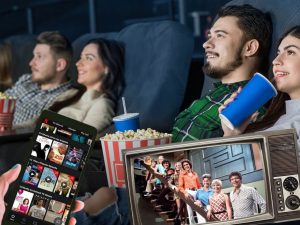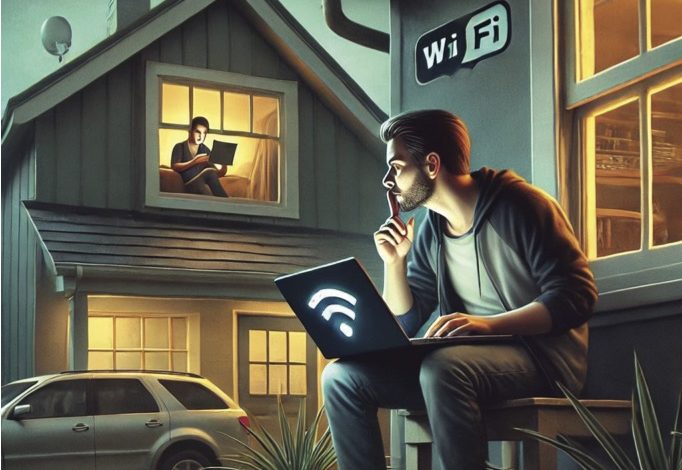El consumo de entretenimiento muestra cambios significativos en los últimos años
Revisando la historia de cómo la gente se entretenía en el pasado, encontramos que en la época romana las personas solían tener actividades para socializar y entretenerse como: Teatro, carreras de carros, combates de gladiadores y juegos olímpicos. Ya en siglos más recientes, el entretenimiento consistía en fiestas que envolvían música y canto, juegos, actividades de cacería, torneos deportivos, competencias, circo y teatro. Podría destacarse que la mayoría del tiempo, las actividades de entretenimiento eran en grupo: Se buscaba

siempre la compañía de otros para entretenerse.
En zonas rurales, posiblemente cambiaban estas actividades siendo más reducida la exposición a muchas de estas actividades por la accesibilidad a los lugares de encuentro y a la cantidad de personas establecidas en el área. Principalmente se realizaban actividades con la familia o
personas cercanas.
A partir del siglo XIX el
entretenimiento tiene un cambio significativo debido a la alfabetización de las personas, de allí que empieza el consumo de medios impresos: Periódicos y revistas. A finales de este siglo vienen revoluciones importantes como el cine.
En el siglo XX aparece la radio, la television y la fotografía; más adelante aparece el tocadiscos (reproductor de música). Sin duda, revoluciones que cambiaron totalmente el entretemiento en persona, para llevarlo directamente desde una pantalla o “una caja” a sus consumidores.
Con el desarrollo y progreso de las sociedades, se abren nuevos medios y vías de transporte, lo que inicia el desarollo de la industria turística.
Durante siglo XX evolucionó el entretenimiento abriéndose a diferentes espacios como polideportivos, o pistas donde se practicaban deportes; salas de exposición de arte, compañías de danza, bares, cantinas, teatros de cine, parques de diversiones, espectáculos de brodway, vaudeville, cabarets, y salones de baile.
A finales del siglo XX vemos como la tecnología y nuevos medios de comunicación se desarrollan en todo el mundo creando nuevas alternativas con el internet y los teléfonos móviles. Estas alternativas son: consumo de cualquier tipo de contenido en un dispositivo que se guarda en el bolsillo del pantalón. En espacios sociales se pueden encontrar discotecas, karaokes, teatros, salones de juegos, casinos, bares, entre otros.
Ya en el siglo XXI encontramos innovaciones que han modificado completamente el consumo y comportamiento del entretenimiento porque todo está en el teléfono: Películas, música, fotografía, realidad virtual aumentada, videojuegos, redes sociales, comunicaciones, libros, revistas, noticias, series de television, compras, inteligencia artificial, entre miles de opciones más.
Haciendo un análisis superficial de la historia del entretenimiento podemos notar que cambió la interacción grupal. Encontramos que es más cómodo y conveniente disfrutar cualquier tipo de contenido desde una pantalla de 6 pulgadas de un teléfono móvil. ¿Cuál será el impacto y el cambio futuro de este tipo de entretenimiento en las personas? ¿Cuál prefiere usted?
Contributing Writer,

Carolina Rojas-Gee is the Marketing and Communications Director for the Greater Palm Bay Chamber of Commerce and works with the Multicultural Networking Group to strengthen this community. She is originally from Colombia, which makes this experience more exciting and relevant.
ENGLISH VERSION
Entertainment consumption has shown significant changes in recent years.
Reviewing how people entertained themselves in the past, we find that in Roman times, people used to have activities to socialize and entertain themselves, such as Theater, chariot races, gladiatorial fights, and Olympic games. Already in more recent centuries, entertainment consisted of parties that involved music and singing, games, hunting activities, sports tournaments, competitions, circuses, and theater. It could be highlighted that most of the time, entertainment activities were in groups: The company of others was always sought to entertain themselves.
In rural areas, these activities possibly changed, with exposure to many of these activities being lower due to accessibility to meeting places and the number of people established in the area. Activities were mainly carried out with family or close friends.
Starting in the 19th century, entertainment underwent a significant change due to improved literacy. Hence, the consumption of printed media began in newspapers and magazines. At the end of this century, important revolutions such as cinema came.
In the 20th century, radio, television, and photography appeared. Later, the record player appeared. These revolutions completely changed in-person entertainment, bringing it directly from a screen or “a box” to its consumers.
With the development and progress of societies, new means and transportation routes are opened, which begins the development of the tourism industry.
During the 20th century, entertainment evolved, opening up to different spaces such as sports centers or courts where sports were played; art exhibition halls; dance companies, bars, cantinas, movie theaters, amusement parks, Broadway shows, vaudeville, cabarets, and dance halls.
At the end of the 20th century, we see how technology and new means of communication developed around the world, creating new alternatives with the Internet and mobile phones. These alternatives are the consumption of any type of content on a device that is kept in your pants pocket. In social spaces, you can find discos, karaoke bars, theaters, game rooms, casinos, and bars.
Already in the 21st century, innovations have completely modified the consumption and behavior of entertainment because everything is on the phone: movies, music, photography, augmented virtual reality, video games, social networks, communications, books, magazines, news, television series, shopping, and artificial intelligence, among thousands of other options.
If we superficially analyze the history of entertainment, we can notice that group interaction has changed. We find that it is more comfortable and convenient to enjoy any type of content from a 6-inch screen of a mobile phone. What will this type of entertainment’s future impact and change on people? Which one do you prefer?






